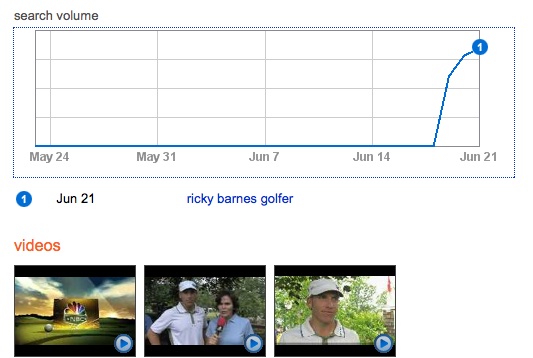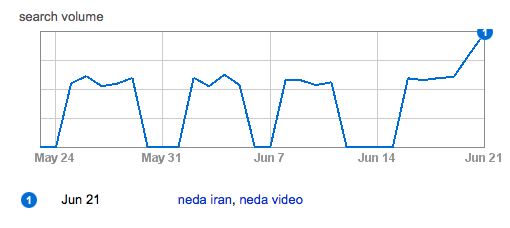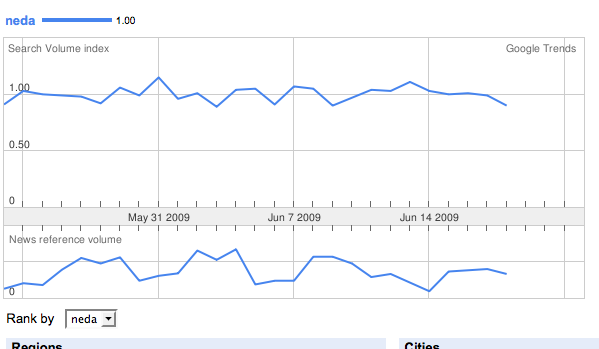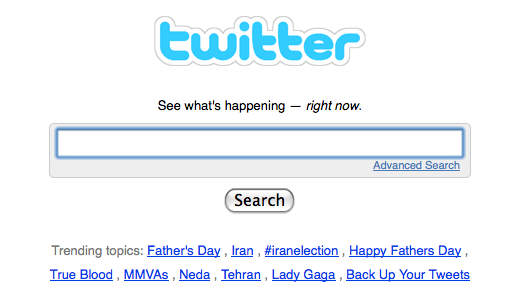As Microsoft tries to take away market share from Google with its new search engine, Bing, it is battling Google feature by feature. One feature where Microsoft seems to be edging out Google is with displaying recent search trends. This may not be a major feature, but it shows a weakness in Google’s armor.
On Google, you can create charts showing the popularity of keywords using Google Trends. On Bing, this feature is called xRank. For all but the most popular terms, Google Trends shows a lag of about three days, whereas xRank shows data that is up to date as of today.
For instance, you might want to see how many people are searching for Ricky Barnes, the golfer who came out of nowhere to lead the U.S. Open this weekend. Bing’s xRank shows the spike in interest you’d expect to see over the past two days, whereas Google Trends shows no data whatsoever. The terms “do not have enough search volume to show graphs.”

Or try “Neda,” the name believed to belong to the Iranian woman who died tragically during a protest march in Tehran, and whose dying image and video is spreading around the Web. Bing’s xRank shows the burst in interest today, along with thumbnails of related news videos. It is also a trending topic on Twitter search. Yet the Google Trend graph is three days old. It only goes up to June 18th.
In cases such as these, the fact that Google is not showing the search data from today and yesterday means that it is completely missing the trend.



